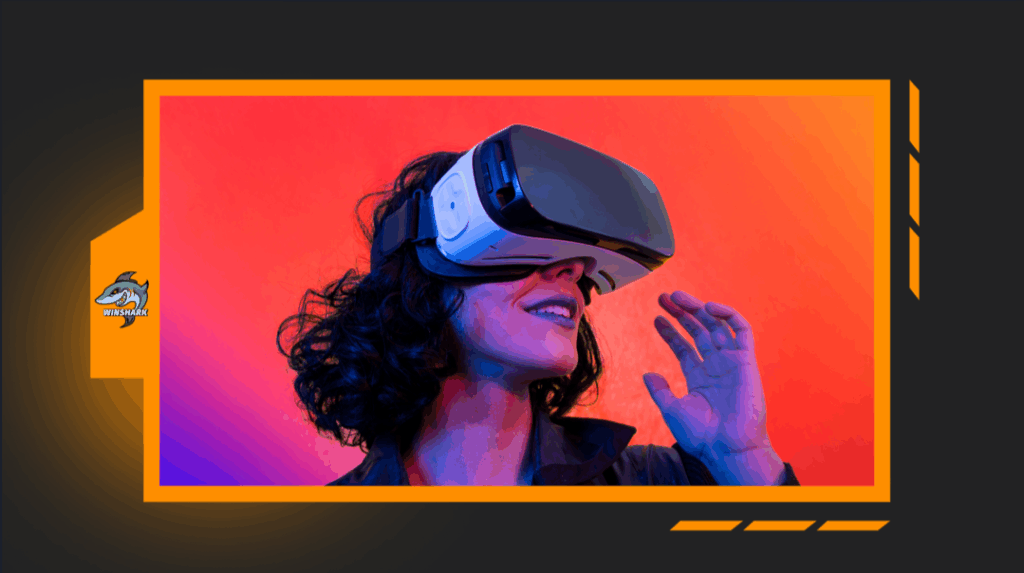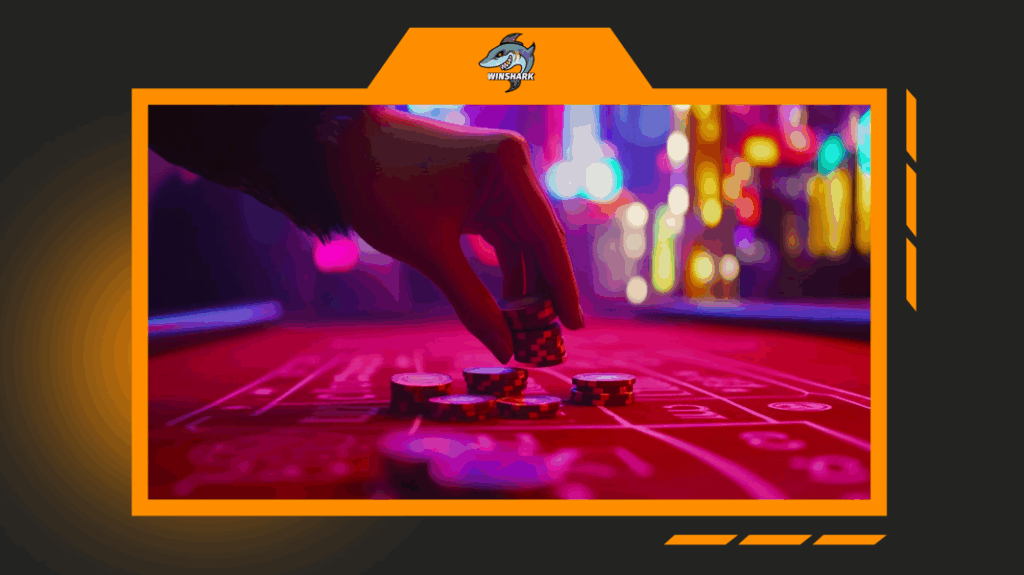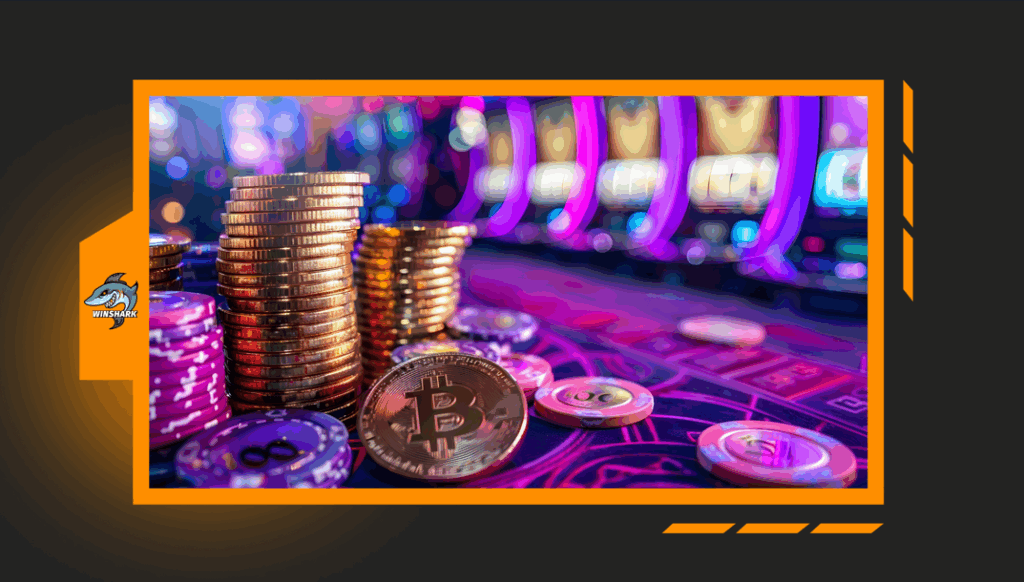Virtual reality casinos are the future of gambling

Introduction
The world of gambling has evolved rapidly in the digital age, transitioning from brick-and-mortar establishments to sleek online platforms. Now, we stand on the brink of another transformation: the rise of Virtual Reality (VR) casinos. This innovative concept blends immersive VR technology with the thrill of gaming, promising players an experience that’s more engaging and realistic than ever before.
In this article, we’ll explore what virtual reality casinos are, how they differ from traditional igaming, what kind of games you can expect, what VR gear is required, and what the future holds for this cutting-edge form of entertainment.
What Is a Virtual Reality Casino?
Definition and Concept
A Virtual Reality casino (VR) is a next-generation digital gambling platform that replicates the ambiance of a real-world casino using virtual reality technology. Instead of simply clicking through menus or tapping on screens, players “step into” a fully immersive 3D environment. This is achieved using VR headsets, motion-tracking controllers, and sometimes even haptic suits or gloves.
Inside a VR casino, users find themselves in lifelike virtual spaces—complete with decorated interiors, atmospheric lighting, ambient sound (like background chatter, slot machines ringing, chips clacking), and fully animated NPC dealers or even real players’ avatars. The environment is often modeled after high-end Las Vegas-style venues, complete with VIP lounges, interactive lobbies, and themed rooms.
The primary goal of a VR is to simulate the social, visual, and emotional experience of being in a physical gambling hall—but without needing to leave your living room.

How VR Casinos Work Technically
VR relies on a combination of advanced real-time rendering engines (like Unreal Engine or Unity), multi-user networking protocols, and motion-tracking hardware to create a believable and interactive world.
Here’s a breakdown of the key technical components:
- VR Headsets (such as Oculus Quest, HTC Vive, or PlayStation VR) provide a stereoscopic 3D display that adjusts with your head movements to simulate natural sight and depth.
- Controllers and sensors detect hand gestures, finger movements, and sometimes full-body motion. This allows for real-time interaction with game elements—like physically picking up chips, pulling a slot lever, or placing a card on the table.
- Audio syncing includes 3D spatial sound that reacts to your environment: you’ll hear footsteps behind you or conversation from a nearby table, just like in real life.
- Online servers manage multiple players in the same space, syncing interactions, avatars, and game results in real-time.
- Optional haptics (e.g., gloves, vests) enhance realism by adding tactile feedback—like feeling the vibration of the roulette wheel or the tension of pulling a virtual lever.
All of this creates a multi-sensory experience that tricks the brain into believing you’re physically present in a games.
The Immersive Experience Explained
What truly sets Virtual reality casinos apart is the sense of “presence”—that uncanny feeling of actually being there. In traditional igaming, interaction is limited to clicks, taps, and menus. In VR, the user becomes an active participant, not just a remote observer.
Inside a VR, you might:
- Walk through a luxurious lobby, glance at a leaderboard, and choose which room to enter.
- Approach a poker table, wave at other players, and sit down by physically lowering yourself in real life.
- Shake hands with another player, give a thumbs-up, or even raise your virtual glass for a toast—all using natural gestures.
- Chat with dealers or other players using voice communication that matches your avatar’s mouth movements.
- Watch as others win or lose, seeing their body language shift and react in real-time.
All of this contributes to a more emotional, engaging, and realistic gaming atmosphere. It’s not just about the games—it’s about the social context, the environment, and the shared experience.
Differences Between VR Casinos and Traditional Online Casinos
User Interface and Interaction
Traditional igaming relies on point-and-click navigation. Virtual reality casinos, on the other hand, offer gesture-based controls and natural interactions, such as reaching out to grab cards or tossing chips onto a table.
Visual and Sensory Experience
The graphics are rendered in 3D, often in high definition, providing a visual realism that’s miles ahead of typical online platforms. Add spatial audio and haptic feedback, and it becomes a sensory-rich environment.
Social Interaction and Multiplayer Aspects
Many VRs include multiplayer features—avatars, voice chat, gestures—making it possible to engage socially with other players or even observe others’ gameplay in real-time.
Accessibility and Hardware Requirements
While igaming is accessible on any device, VR ones require specific gear such as a headset and compatible hardware. This raises the entry barrier for casual users.

VR Casino Games: What to Expect
Popular VR Games Overview
Expect to find all the classics in VR format:
- Slots with immersive themes
- Blackjack with gesture-based card handling
- Roulette with realistic physics
- Poker with full-table social interaction
How VR Changes the Gameplay Experience
In VR, the gameplay is no longer limited to button-clicking. It’s fully interactive. You can physically spin the roulette wheel, lean into the table to examine your hand, or make eye contact with other players.
Unique VR Game Features
Some standout features include:
- Customizable avatars
- Real-time voice chat
- Body language and gestures
- Environment customization (choose your own virtual style)
Exclusive VR Games and Innovations
Some VR develop exclusive content not found on traditional platforms—like futuristic games, fantasy casino settings, or AI-driven game hosts.
What Is VR Gear?
Overview of VR Hardware
To enter a VR, players need:
- VR headset (e.g., Oculus Quest, HTC Vive)
- Controllers for hand movements
- Sensors or cameras for spatial tracking
Leading VR Devices for Gaming
- Oculus Quest 2 – Standalone, wireless, affordable
- HTC Vive – High-end PC-based option with precise tracking
- PlayStation VR – Console-based for PS users
- Valve Index – Premium experience with advanced controllers
How VR Gear Enhances Game Experience
VR gear adds depth and realism. With motion tracking and 3D audio, players feel like they’re physically present in the room, making the entire experience more thrilling and social.
Price Range and Accessibility Considerations
VR gear can range from $300 to over $1000. While prices are falling, the upfront investment still limits access for some players.
Setting Up and Getting Started with VR Casinos
How to Start Playing in a virtual reality
- Choose a VR-compatible platform.
- Install the required app or software.
- Set up your VR gear.
- Create an account and deposit funds.
- Jump into the virtual world.
Software and Hardware Requirements
- A gaming PC (for tethered systems) or standalone VR headset
- Stable high-speed internet
- App or software
Safety Tips and Best Practices
- Use wrist straps to avoid dropping controllers
- Take breaks to prevent fatigue
- Ensure enough play space
- Be mindful of in-game spending

Advantages of Virtual Reality Casinos
Immersive, Lifelike Gaming Atmosphere
Imagine stepping into a stunning, chandelier-lit casino in Monte Carlo—except you’re barefoot in your living room. That’s the magic of VR. The immersive atmosphere isn’t just about sharp graphics; it’s about feeling like you’re really there. From the echo of slot machines to the velvet texture of a virtual blackjack table, VR creates a multisensory playground where players lose themselves in the moment. It’s no longer just a game—it’s an experience.
Social and Interactive Gaming Experience
Forget about cold, automated interfaces. In the VR world, you’re not just battling an algorithm—you’re raising the stakes with real people, sitting across a virtual table, reading their body language, hearing their laughter, or even striking up casual banter. Voice chat, avatars, gestures—they all combine to recreate the social thrill of a night out, minus the overpriced drinks. For many, it’s the first time an online one has felt truly human.
Variety and Realism of Games
Whether you’re into classic Texas Hold’em or curious about a dragon-themed slot in a medieval castle, they have something for every taste. And it’s not just about aesthetics. In VR, you can physically spin the roulette wheel, flip a poker chip, or pull the arm of a retro slot machine. That tactile realism boosts engagement in a way flat-screen interfaces simply can’t match. Plus, many VR games now go beyond the “real” world—think fantasy blackjack on Mars or underwater poker with floating cards.
Convenience of Playing from Home
No plane tickets. No dress code. No dealing with crowds or smoke. VR lets you enjoy a luxury casino experience in your pajamas, drink in hand, without ever leaving your couch. It’s the best of both worlds: the ambiance of a high-end venue, but with the freedom and comfort of playing at home. Perfect for introverts, busy parents, or anyone who likes gambling without the hustle.

Challenges and Limitations of VR Casinos
Hardware Costs and Technical Barriers
Let’s face it—VR doesn’t come cheap. A good headset like the Meta Quest 3 or HTC Vive, plus a powerful gaming PC, can easily set you back hundreds, if not thousands, of dollars. For casual players, that’s a serious investment. And for those not tech-savvy, the setup itself might feel like rocket science.
Motion Sickness and Comfort Issues
Not everyone’s stomach agrees with virtual movement. Fast camera spins, jittery frame rates, or poorly optimized environments can lead to VR-induced motion sickness, headaches, or just plain discomfort. Game developers are working on it, but the “VR wobble” is still real for some players—especially during long sessions.
Internet Speed and Performance Requirements
A jittery connection can break the illusion instantly. In a space where timing, syncing, and realism are everything, even a small lag spike can turn a tense poker bluff into a frozen-screen fail. Virtual reality casinos demand stable, high-speed internet—anything less risks ruining the immersive experience.
Limited Game Selection
Let’s be honest: while VR is growing fast, they still can’t compete with the sheer volume of games found in traditional online platforms. The catalog might include roulette, blackjack, poker, and a handful of themed slots—but if you’re looking for 3,000+ titles with bonus buys and Megaways, you may need to wait a bit longer.
The Future of VR Casinos
Upcoming Technological Innovations
Think we’ve hit peak immersion? Think again. The future is full of mind-blowing possibilities. We’re talking:
- Haptic suits that let you feel a chip toss or the rumble of a jackpot.
- Scent generators that release aromas of lounges or beachside resorts.
- AI-powered dealers who can chat, react, and even remember your playing style.
It’s like stepping into Westworld without the dystopia.
Potential to Replace or Complement Land-Based Casinos
VR won’t kill physical casinos — but it might evolve them. Think hybrid experiences: play a tournament in Vegas while virtually competing with global players from Tokyo to Toronto. For many, VR could become a new form of night out, one that’s cheaper, safer, and more accessible. Expect real ones to start integrating VR lounges, too.
Expansion of Social Features
Current avatars are fun, but the future promises full-body tracking, facial expressions, and more fluid interaction. Soon, your virtual self might raise an eyebrow, lean in conspiratorially, or even high-five a stranger after a shared win. Add shared lounges, leaderboards, mini-games, and you’ve got a persistent social casino world — not just a one-off session.
Integration with Cryptocurrencies and Blockchain
Crypto is already changing online gambling, and VR will ride that wave. Many VRs now accept Bitcoin, Ethereum, or even niche gaming tokens. But beyond payment, blockchain offers transparency, fairness, and identity protection. Smart contracts could power provably fair games, and NFTs might unlock exclusive tables, avatars, or status badges. This is Web3 gambling with goggles on.
Virtual Reality Casinos and Responsible Gaming
Tools for Responsible Play
VR doesn’t mean forgetting the rules. Most VR platforms are already integrating tools to keep players safe:
- Session timers to track how long you’ve been inside.
- Spending limits that sync with your account or device.
- Self-exclusion options that can even lock you out of the VR space entirely if needed.
Some are experimenting with behavioral nudges—subtle changes in ambiance or AI suggestions when play becomes excessive.
Gambling Addiction Concerns
Here’s the flip side: immersion cuts both ways. The stronger the illusion, the easier it is to lose track of time, money, or reality. The emotional highs (and lows) feel real, making the risks of addiction potentially more intense than in 2D settings. That’s why smart design, education, and regulation are more important than ever in the VR space.

Why Are VR Casinos Gaining Popularity?
Appeal to Tech Enthusiasts and Younger Players
Gen Z and Millennials grew up on immersive tech—video games, social media, livestreams. For them, VR isn’t sci-fi—it’s the next logical step. They crave depth, interaction, and novelty, and VR casinos scratch all those itches.
Desire for Novel and Engaging Experiences
Let’s face it—traditional online casinos can feel sterile after a while. Clicking the same spin button gets old fast. VR casinos offer that “wow” factor. Every login can feel like a mini adventure, a night out, or a digital escape room with cash prizes.
Shift Toward Immersive Technologies
The tech industry is moving fast: from Apple’s Vision Pro to Meta’s VR roadmap, immersive computing is the future. And as these devices become more affordable and mainstream, VR casinos are perfectly positioned to ride the wave—transforming online gambling from passive play to interactive entertainment.
Conclusion
Virtual Reality casinos aren’t just a gimmick — they’re a bold step toward the future of online gambling. For players seeking more than just spinning reels or static tables, VR offers immersion, social connection, and realism that flat-screen platforms simply can’t match.
Yes, there are hurdles: the hardware isn’t cheap, motion sickness is real for some, and game libraries are still catching up. But the pace of innovation is rapid. With crypto integration, haptic feedback, full-body avatars, and AI dealers on the horizon, today’s limitations will likely become tomorrow’s selling points.
For tech-savvy players, early adopters, and those craving a casino experience that feels alive, VR gambling is already delivering something special. It’s not about replacing land-based casinos or 2D platforms — it’s about giving players a new way to play, connect, and feel like they’re truly part of the game.
In short: if you’ve got the gear and the curiosity, VR casinos are absolutely worth exploring. Just remember — immersion is powerful, so play smart, stay mindful, and enjoy the ride.

 Slots
Slots


Comments
Be the first to leave a comment!